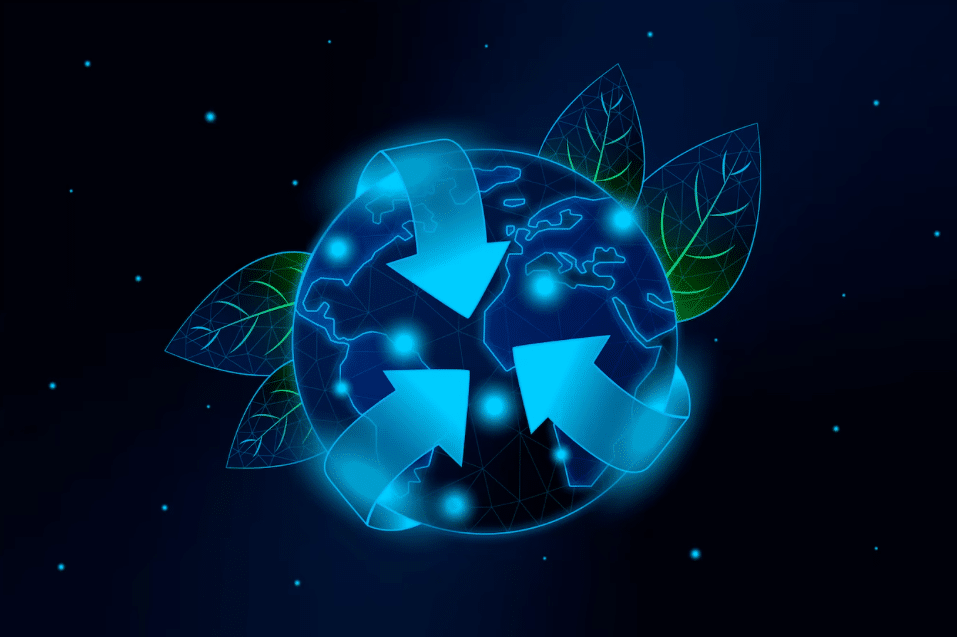Climate change is one of the most pressing challenges of our time, and technology plays a crucial role in combating this global problem. As we move towards a sustainable future, technological innovations are becoming powerful tools to reduce our carbon footprint. From renewable energy generation to sustainable mobility and the creation of green cities, technology is transforming how we live and work. In addition, green building, smart agriculture and efficient energy management are just a few examples of how technology is helping us to optimize resources, minimize emissions and promote conscious consumption.
In this digital age, harnessing the potential of technology is fundamental to achieving a more sustainable future and meeting the challenge of climate change. These are some of how we can contribute to a change in our generation.
Renewable energies: Technological innovations for cleaner power generation
The transition to renewable energies has become a priority in the fight against climate change. Technological innovations are playing a key role in this process, enabling cleaner and more sustainable energy generation. From more efficient solar panels and state-of-the-art wind turbines to advanced energy storage systems, technology is driving the expansion of renewable sources.
In addition, the development of smart grids and the integration of artificial intelligence into energy management are optimizing the use of resources and enabling greater flexibility in the generation and distribution of renewable energy.
These technological innovations are key to building a cleaner energy future and reducing our dependence on fossil fuels.
Sustainable mobility: How technology is transforming transportation
Sustainable mobility is increasingly relevant in the search for solutions to combat climate change. Technology plays a key role in this transformation of transportation. Innovations such as electric vehicles and fast charging systems are revolutionizing the way we get around, drastically reducing carbon emissions.
Carpooling and ridesharing apps and platforms are optimizing vehicle use and encouraging a more collaborative approach. Artificial intelligence and the Internet of Things are also being used to improve traffic management and route planning, minimizing congestion and saving time and energy. Technology is paving the way for more sustainable mobility and helping us build a future with clean and efficient transportation.
Green building: Technological solutions for more efficient buildings
Green building has become a priority in the quest for more sustainable development. In this regard, technological solutions play a key role in the planning and construction of more efficient housing.
Design and room planner programs make it possible to simulate and optimize the energy consumption of buildings, maximizing the use of renewable sources and minimizing environmental impact. In addition, the incorporation of intelligent sensors and automation systems in homes helps to regulate energy consumption, reducing waste and increasing efficiency. These technological innovations in green building are bringing us ever closer to a future where buildings are eco-friendly and environmentally friendly.
Smart agriculture: Reducing emissions through agricultural technology.
Smart agriculture is playing a crucial role in reducing emissions and promoting sustainability in the agricultural sector. Thanks to technological innovations, farmers have access to tools such as sensors, drones and smart irrigation systems that optimize the use of resources such as water and fertilizers.
Data-driven monitoring and management enables precision agriculture, avoiding excessive use of chemicals and reducing associated emissions. The adoption of more efficient and sustainable agricultural practices through technology is fundamental to preserving the environment and ensuring food security in a sustainable future.
Intelligent energy management: How technology optimizes consumption
Smart energy management is a key strategy for reducing consumption and maximizing efficiency in homes and businesses. Technology plays a key role in this process, enabling accurate monitoring and control of energy consumption.
Through smart devices, such as programmable thermostats and automated lighting systems, usage patterns can be optimized and energy waste reduced. Energy management apps and platforms provide real-time information and personalized recommendations to encourage more conscious consumption. Technology is empowering users and promoting greater responsibility in the use of energy resources, paving the way for a more sustainable future.
Conscious consumption: Technology tools for a sustainable lifestyle.
Conscious consumption has become an urgent necessity to address environmental challenges. Technology plays a key role in providing tools and applications that promote a sustainable lifestyle. From mobile apps that help track and reduce energy and water consumption, to e-commerce platforms that facilitate the purchase of green and sustainable products, technology is empowering consumers to make more informed decisions. Artificial intelligence and machine learning are enabling greater personalization of recommendations and suggestions for responsible consumption.
By leveraging these technological tools, we can move towards a more sustainable lifestyle and contribute to the preservation of the planet.
Conclusion
Climate change and the need for a sustainable lifestyle require us to take concrete action. To implement what we have learned, it is important to start by adopting technologies and practices that will help us reduce our environmental footprint. We can opt for the use of renewable energy in our homes, such as installing solar panels.
In addition, we should take advantage of available applications and platforms to track and reduce our consumption of energy, water and other resources. Likewise, when shopping, we should prioritize ecological and sustainable products, using applications that provide us with information on their environmental impact. By combining the use of technology and conscious decision making, we can make a significant contribution to a more sustainable and responsible future.
